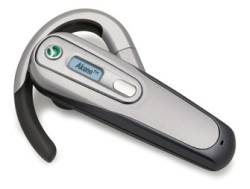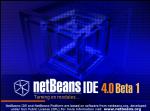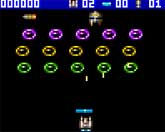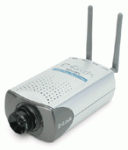 Yet another Bluetooth headset. I sure hope that this one sticks with me for a while.
Yet another Bluetooth headset. I sure hope that this one sticks with me for a while.
The main feature that sold me the Sony HBH-660 was the caller info.
The headset has a tiny 6 character LCD display. Besides showing battery status, volume level and other good information it also display a caller’s number or name if you have the number stored in your phone as a contact.
The headset comes with a strap so that you can wear it around your neck. Much better than loosing it in a pocket somewhere. While wearing the unit around your neck, the caller info is really handy.
The battery life has improved slightly from my previous HBH-60. This could also be just a perception due to the new battery indicator.
The HBH-660 is tiny bit heavier than the HBH-60 and HBH-600 but it did not result in any discomfort.
On a downside, my HBH-660 has worse voice quality than my old HBH-60 and HBH-30. This could be due a faulty device but I recommend you to try it out before purchase!
Tag: review
Netbeans 4.0 Beta 1 – first impressions
The potential is great but I have mixed first feelings.
 The new Netbeans is (Ant) project oriented a la Eclipse, IntelliJ and others. Point at an Ant build script, and Netbeans will try to pick out source, target and library directories. No more mounting ad hoc mounting of directories, things have to be more organised.
The new Netbeans is (Ant) project oriented a la Eclipse, IntelliJ and others. Point at an Ant build script, and Netbeans will try to pick out source, target and library directories. No more mounting ad hoc mounting of directories, things have to be more organised.
Refactoring has a dedicated menu option. You will be able to rename and move classes around; Netbeans will search all of the code base and reflect the changes.
Multiple build targets is something that has always been lacking. Finally Netbeans 4.0 allows you to define a build target for each source path. Build your Servlets, EJB implementations, interfaces, utilities and etc to different targets.
I know this is just a first beta (the final release is scheduled for December 2004) but there were exceptions all over the place. Possibly because I tried to open two medium to large sized existing projects. Had I started creating a small project from scratch, it would have given NB 4.0b1 a more fair chance.
The J2EE development support preview coming in October will be interesting. Additional exciting coming feature is the Profiler. I have already tried the stand-alone preview and once again it did not manage to profile two of our main projects due to exceptions 🙁
Here is a good document on how to move from Netbeans 3.6 to Netbeans 4.0.
My thumb is hurting…
 … I have been playing too much of “Alien Scum” on my mobile (SonyEricsson T630).
… I have been playing too much of “Alien Scum” on my mobile (SonyEricsson T630).
There is something special about low tech games that makes them addicting. You will not see any fancy 3D graphics or stunning animations. Still, this repetitive game is very addicting.
Alien Scum reminds a lot of Alien Invaders. Kill all aliens on the screen to advance a level. This version adds some power ups but in my opinion, it doesn’t match up to the original.
You should be able to get it FREE from the SonyEricsson mobile site.
DLink DCS-2100+ Internet Camera review
 D-Link DCS-2100+ is a WiFi enabled web camera with a built in web server, FTP and mail sending functionality.
D-Link DCS-2100+ is a WiFi enabled web camera with a built in web server, FTP and mail sending functionality.
This means it can “easily” be connected to an existing wireless network (WLAN) and only needs a near by power outlet to be connected. The built in web server makes it fully functional on its own, not requiring a PC to be on constantly.
The setup is fairly straight forward. Connect the camera with the supplied network cable to a router. Set up the wireless parameters such as IP address, SSID and WEP encryption.
Unplug the network cable, power cycle the camera and it should connect to your WLAN. In theory. In practice you may have some connectivity issues, as always with WiFi.
It wasn’t mentioned ANYWHERE but the camera works only with a broadcasted SSID. I figured this out the hard way, only being able to connect after many, many trials of various setups on the camera and my router. Not too happy about this fact because of all the exploit possibilities of WEP but I am hoping that a future firmware release will fix this issue.
The camera has a web interface that will let you modify everything you need. First thing will be to create some user accounts that will be able to view video from the camera but not be able to access the setup.
The FTP functionality lets you upload a snapshot to a web server in arbitrary intervals. If you instead prefer to be emailed with a snapshot as an attachment just enter an SMTP server and email address. The latest firmware supports SMTP authorisation if your SMTP server requires that. It doesn’t seem to be possible to both FTP and send email.
When you connect first time to the web camera you will be asked to download 1-2 ActiveX components to be able to view streaming video and audio. This works very well in IE on Windows but any other browser or OS is not supported.
Once connected, you have the choice between UDP, TCP and HTTP connection. UDP results in best quality but may be blocked by corporate firewalls. HTTP is video only but should work even if behind a firewall.
The camera comes with a IP surveillance software that is run from a PC. It supports up to 20 (!) cameras if you are interested in a thorough CCTV solution.
Motion detection is a feature with great potential but I found it too complex to set up and not working very well anyway. In theory, you should be able to receive an email with attachment when motion is detected.
Via the web interface you can adjust standard video settings like video quality, white balance, image size, brightness and etc.
There are many smaller enhancements I’d like to see in future firmware releases. A separate SMTP and FTP functionality. Better motion detection setup. HTTPS support for administrative functions. Cross browser compatible connectivity. Support of non-broadcasted SSID. Leaner user interface.
+
Wireless
No PC required
Sound
Included monitoring software
–
Broadcasted SSID required
Complicated motion detection setup
Supports IE only

Example image from the camera (the page is a custom page made by me).
Update
Comments have been closed, Please use the DLink DCS-2100+ Internet Camera forum for any questions / feedback.
